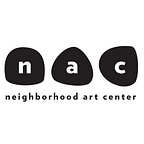Prehistoric Art
Long long long looooooooong ago before we even had written language prehistoric people were making art! Art is at the core of what it means to be human and experience life. But, before we dive into the art, let’s talk about what prehistory is and the people who lived during this era.
The Paleolithic Period, or Stone age is defined as a time before written records. The only ”records” we have from this time are paintings, sculptures and various tools or weapons.
This means we have to infer or guess as to the meanings and uses of the artifacts left behind. So lets’s put our sleuthing caps on and try guess what this might be.
It’s about four inches long,
& made of reindeer horn,
& depicts an animal, maybe a bison?
Hmmm… Might it be a toy for kids to play with? Or part of a tool? Perhaps it’s a religious object?
Upon further inspection you might notice that this object is broken, it’s only a fragment of a whole. If we piece every thing together we get what looks like the tip of a spear head.
This makes a lot of sense when we consider what we know about the prehistoric peoples.
- They were nomadic, meaning they moved around a lot and didn’t build permanent shelters.
- They were hunter/gatherers and moved with their food sources.
- Animals were really important because they provided them with food, clothes, tools, etc.
Because animals were so important to them a lot of their art depicted animals.
Fun Fact: Most of the art we have from the prehistoric period comes from caves!
Animals in art at this time were depicted very specifically. They were painted or carved in strict profile. This view allows us to see the head, all four legs and the torso. It gives us the most information. The depictions were usually simple but easily recognizable.
Let’s use this to make some art!
Look around your house for some plastic animals! Pick your favorite and place it in profile view. Do your best to draw its silhouette! Hint: for really young kids you could shine a flash light on the animal and trace the shadow.
Now use some oil pastels or crayons to color in your animal.
Now let’s explore some more depictions of animals in prehistoric art. You can visit this website to digitally explore the prehistoric caves at Lascaux!
Cave paintings are found deep within caves. This means they are far from light sources. So painters had to figure out a way to combat the darkness. Additionally prehistoric animals dwelt in caves and it was quite easy to get lost in the dark chasms, yet prehistoric peoples still ventured into them.
Why do you think they took that risk?
Here are the most common theories:
- Prehistoric people attributed magical properties to the paintings. They might have thought it gave them power over the animals to hunt them, or ensure the survival of their herds.
- Wall paintings might have served as a teaching tool, to instruct new hunters.
- The animals depicted might have been deities that prehistoric people revered and worshipped.
Let’s make our own cave paintings!
First find a dark area you could crawl into. Hint: Your kitchen table might work really well. Tape a piece of paper on the upper wall of your “cave.” Next you’ll need to find some supplies to venture into your “cave.”
You’ll need…
- A light source. Hint: a flash light would work great!
- Some kind of paint or drawing substance. Hint: ground some chalk with a mortar and pestle and mixed it with water!
- A paint brush!
Now it’s time to venture into our “cave” and create some art!
Another art form we find in caves from prehistoric time are handprints. Prehistoric people would often leave a positive or negative hand print on the walls of the caves they ventured into.
Positive hand prints are made by applying paint directly to the hand and “stamping” it onto the wall. The print left by your hand is a positive hand print. Negative hand prints are made by placing your hand on the wall and blowing pigment around the hand. The space left when you remove your hand is the negative hand print.
You can make your own with some paint and paper!
Paint your hands to make positive ones. For negative prints trace your hand on a piece of paper, then cut it out. Once you’ve done that you can tape it to a new paper and paint all around it. When it dries you can remove the paper and you’ll have a negative print!
